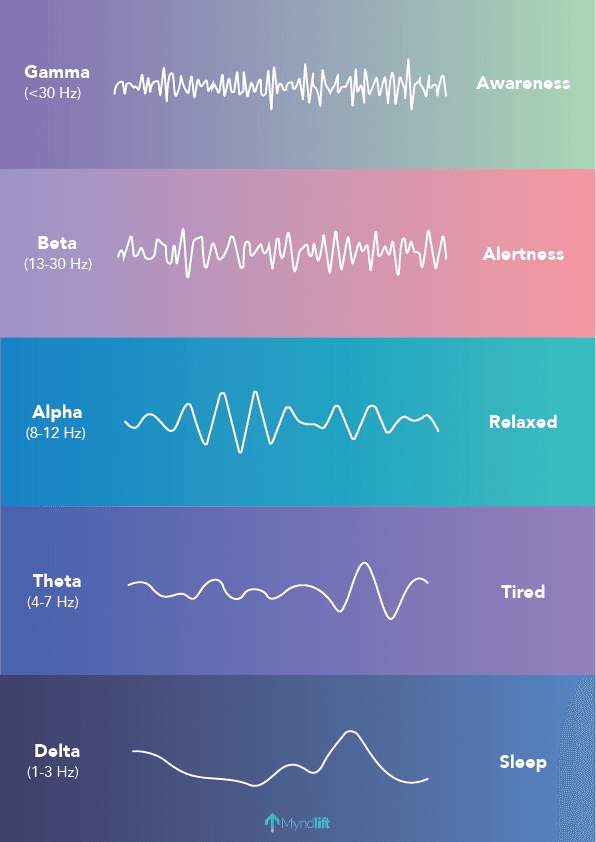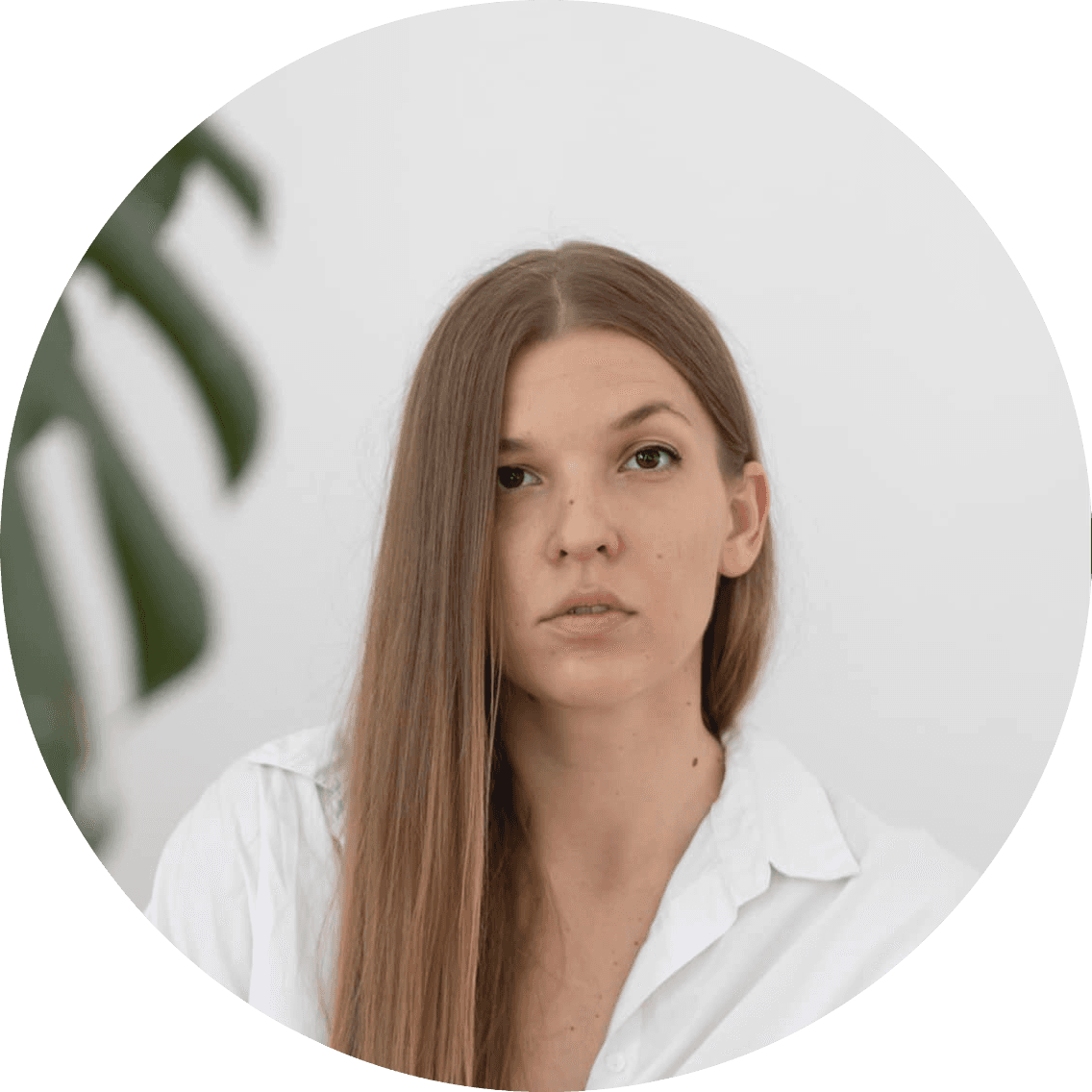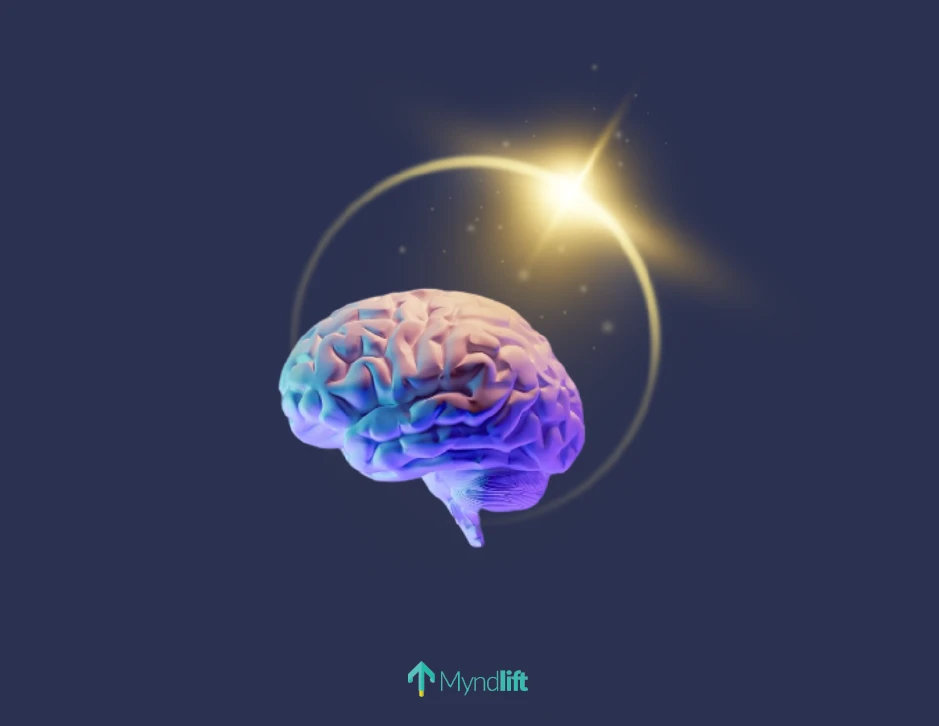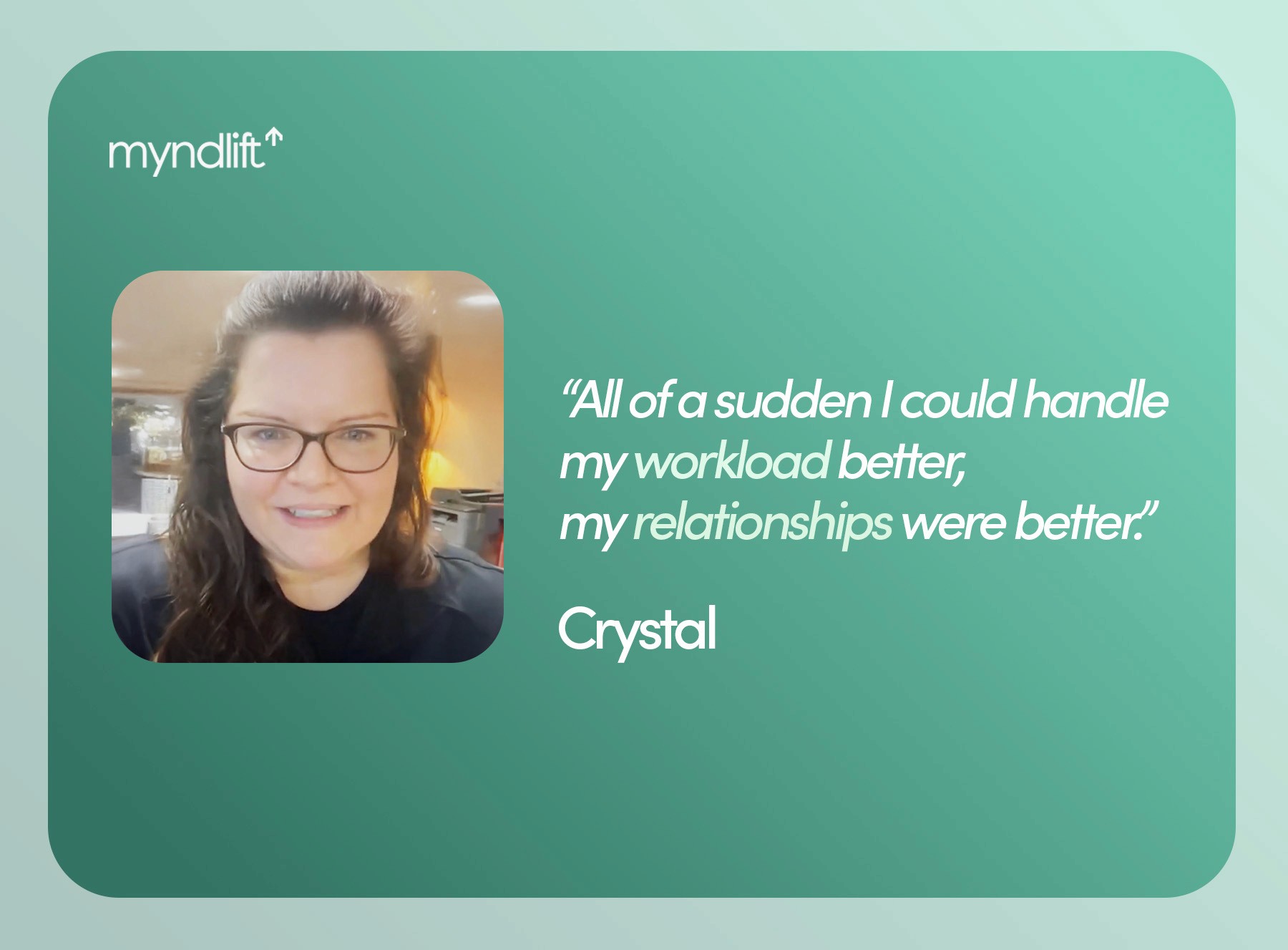Brainwaves are patterns of electrical activity occurring in the brain. They are associated with different states of consciousness; when you're relaxed, your brain activity measurements will show increased alpha brainwave activity.
Harnessing the alpha brainwave state can help you enter a relaxed, creative mode of concentration that results in powerful performance, which allows you to do deep work with less effort.
You can train your brain to be in the alpha state more often by moving your fitness routine outside, engaging in mindfulness meditation, creating a mental cue, and doing brain training.
This article was reviewed by Dr. Nathan Brown, a clinical psychologist with over 35 years of experience using biofeedback and neurofeedback techniques.
The ability to perform at your best may seem like an art, a natural talent, but, in actuality, there's a science behind it. In those moments of total absorption in what you're doing, where time flies and your productivity levels skyrocket, there's a specific pattern of brain activity playing out – a pattern that has been measured and observed.
In that place where your mind is sharp and focused, synchronized electrical pulses from communication between billions of neurons amplify a specific neural oscillation commonly known as alpha brainwaves.
When your brain operates at this frequency, you can absorb new information easily and be significantly more creative. You're fully engaged with the task at hand yet relaxed as you calmly and deftly decimate tasks and deadlines.
As previously mentioned – there’s a science behind this; with practice and consistency, you can access this state more often and improve your performance as a result. But before we break down alpha mastery strategies, let's dive deeper into brainwaves themselves.
What Are Alpha Brainwaves and How Can You Increase Them?
Brainwaves are patterns of electrical activity occurring in the brain. They are associated with different states of consciousness, including alertness, relaxation, and sleep, and can indicate when you're feeling tired, focused, or relaxed.
For example, when you're relaxed, your brain activity measurements will probably show increased alpha brainwave activity. On the other hand, if you're tired and drifting off to sleep, it's more likely that theta will be your dominant brainwave frequency.
In fact, there are five of these brainwave states, and they are measured in frequency (speed of the waves expressed in hertz, which is the number of waves per second) and amplitude (height of the waves expressed in microvolts):
Delta waves (0.5 to 3 Hz) are amplified in deep meditation and dreamless sleep, a state in which healing and regeneration occur.
Theta waves (3 to 8 Hz) relate to dreamy, free-flowing, detached unconscious states and are essential for processing information, learning, memory, and intuition.
Alpha waves (8 to 12 Hz) are dominant during meditative and mindful activities, representing non-arousal.
Beta waves (12 to 38 Hz) are high-frequency waves that are dominant in the mid-and frontal regions during instances of problem-solving, judgment, decision-making, or other focused mental activity. They can be subdivided into three categories: Lo-Beta (Beta1, 12-15Hz), Beta (Beta2, 15-22Hz), and Hi-Beta (Beta3, 22-38Hz).
Gamma waves (38 to 42 Hz), the fastest brainwaves, are dominant at times of intense focus.

All of these brainwaves are essential and active in various combinations throughout the day and night. Still, in a well-tuned brain, a particular brainwave state will arise in response to a particular context or circumstance, and the brain can be trained to produce these context-specific states in order to optimize coping, resilience, and performance.
For example, let’s say you’re an artist seeking to harness your creativity. Alpha brainwaves are typically associated with a relaxed, meditative state, and they provide the foundation for mental flexibility, calmness, alertness, mind/body integration, and learning. Those qualities are essential to an artist, and so you would want alpha to be dominant in instances of creative work.
Harnessing the alpha brainwave state can help you enter a relaxed, creative mode of concentration that results in powerful performance, which allows you to do deep work with less effort.
We’ll go over things you can do to achieve that alpha state more efficiently, such as:
1. Move Your Fitness Routine Outside
Countless studies have shown that regular yoga practice and/or aerobic activity help with reducing stress and improving focus and, as a result, may enhance alpha activity in the brain.
When you exercise, your heart pumps faster, and more blood and oxygen circulate to your brain. That's why after a workout, people perform better on tests for memory and attention. Furthermore, exercise encourages your brain to release endorphins, which are chemicals in the brain that are the body's natural painkillers and mood elevators.
And if you take your workout outdoors, you'll reap even more benefits! In fact, research has shown that viewing naturally occurring fractals further increases alpha brainwave activity.
A fractal is a complex pattern that's repeated at fine magnification. You can find these patterns throughout nature in trees, clouds, rivers, and coastlines. Through exposure to nature's fractal scenery, your visual system has adapted to process fractals easily, which is why you might feel calmer after a jog by the river or a yoga class in the park.
2. Engage in Mindfulness Meditation
Mindfulness meditation involves cultivating an awareness of the present moment by slowing down and concentrating on your thoughts and feelings.
This type of practice can have a calming effect on your mind and encourage the production of alpha waves. One study, in particular, showed that it took participants 40 days of practicing mindfulness meditation to make alpha their dominant brainwaves. As a result, the study participants reported improved sleep quality, reduction in anxiety and depression, lower stress levels, and enhanced learning and memory.
If you're feeling overwhelmed and don't know where to start with meditation, try this simple suggestion from Dr. Amishi Jha, a neuroscientist and associate professor of psychology at the University of Miami. Dr. Jha recommends doing specific mindfulness exercises for 12 minutes, 3-5 days a week, to help declutter your mind and reduce stress.
3. Find Your Mental Cue
In the late 19th century, Russian scientist Ivan Pavlov noticed that his dogs would salivate when presented with food. By conditioning the animals to associate a ringing bell with meals, Pavlov showed how our environment could shape our behavior. This is known as the Pavlov’s dogs effect and is an example of classical conditioning.
Just like Pavlov's dogs, your brain can also be conditioned to respond to certain triggers, including the production of alpha waves. In fact, according to The War of Art by Stephen Pressfield, establishing a routine you use before entering a creative or productive state could help you reach peak performance more quickly.
In the book, he describes his pre-writing routine, which includes him reciting the "Invocation of the Muse" from Homer's Odyssey and positioning a tiny cannon on his desk in a particular way. However, in order to condition your brain to respond to a trigger, it's essential to be consistent and to repeat your chosen ritual frequently.
4. Train Your Brain
By doing a specific type of brain training called neurofeedback, you can train your brain to be in the alpha state more often. And you can do it while listening to music, streaming your favorite TV show, or playing games. Here's how it works:
You play specialized games or watch videos while wearing a headband that measures your brain activity. When your brainwaves are in the target range, you see that feedback in real-time on your screen.
For example, only when your brainwaves are in the optimal range, indicating you're focused, you'll be rewarded by getting more points. Sounds familiar? The concept is similar to Pavlov’s dog effect. Over time, positive feedback teaches your brain to maintain the desired state, whether it's relaxation, focus, or performance.
So it's like learning to ride a bike. Each time you fall, it's feedback for your brain telling you where you went wrong and how to rectify it. After a few falls and corrections, your brain learns to regulate itself and reach its optimal alpha brainwave state without the immediate reward of positive feedback.
As a result of this type of brain training, you can experience improvement in your focus & attention, motor skills, relaxation, peak performance, and general wellbeing.
That's why professional or competitive athletes, executives, musicians, and students are some of the individuals who seek brain training. In fact, it’s often part of the training program for Olympians and professional athletes in the NFL and NBA because it helps athletes learn how to get their brains into a state of improved attention, focus, discipline, and aim.
Thanks to the technological breakthroughs that made brain training more accessible, the level of incredible performance that was once possible for the few is now available to many. Today we have modern tools to achieve peak performance, and we know that the key to enhanced creativity and productivity is harnessing the brain's alpha waves. Dive in and unlock your brain's hidden potential!
Myndlift provides professional supervised brain training that can be done right from the comfort of your home. Connect with us to kick start your journey for better brain health and wellbeing from here.
About the author:
Dubravka Rebic
Dubravka Rebic puts a lot of time and energy into researching and writing in order to help create awareness and positive change in the mental health space. From poring over scientific studies to reading entire books in order to write a single content piece, she puts in the hard work to ensure her content is of the highest quality and provides maximum value.
About the checker:

Dr. Nathan Brown, Ph.D.
Dr. Brown is a clinical psychologist with over 35 years of experience using biofeedback and neurofeedback techniques. His clients include people dealing with depression, anxiety, ADHD, PTSD, and other stress-related conditions. He also helps those who seek to simply "raise their game" in their personal lives as well as their careers.
References
Cohen MX. Where Does EEG Come From and What Does It Mean? Trends Neurosci. 2017 Apr;40(4):208-218. doi: 10.1016/j.tins.2017.02.004. Epub 2017 Mar 15. PMID: 28314445.
Queen Mary University of London. (2018, December 10). Brainwaves suppress obvious ideas to help us think more creatively. ScienceDaily. Retrieved February 22, 2023 from www.sciencedaily.com/releases/2018/12/181210150622.htm
Sacchet MD, LaPlante RA, Wan Q, Pritchett DL, Lee AK, Hämäläinen M, Moore CI, Kerr CE, Jones SR. Attention drives synchronization of alpha and beta rhythms between right inferior frontal and primary sensory neocortex. J Neurosci. 2015 Feb 4;35(5):2074-82. doi: 10.1523/JNEUROSCI.1292-14.2015. PMID: 25653364; PMCID: PMC4315835.
Boris Gutmann, Andreas Mierau, Thorben Hülsdünker, Carolin Hildebrand, Axel Przyklenk, Wildor Hollmann, Heiko Klaus Strüder, "Effects of Physical Exercise on Individual Resting State EEG Alpha Peak Frequency", Neural Plasticity, vol. 2015, Article ID 717312, 6 pages, 2015. https://doi.org/10.1155/2015/717312
Hagerhall, C. M., Laike, T., Taylor, R. P., Küller, M., Küller, R., & Martin, T. P. (2008). Investigations of Human EEG Response to Viewing Fractal Patterns. Perception, 37(10), 1488–1494.
Kaushik M, Jain A, Agarwal P, Joshi SD, Parvez S. Role of Yoga and Meditation as Complimentary Therapeutic Regime for Stress-Related Neuropsychiatric Disorders: Utilization of Brain Waves Activity as Novel Tool. Journal of Evidence-Based Integrative Medicine. 2020;25. doi:10.1177/2515690X20949451
Amishi P. Jha. Peak Mind: Find Your Focus, Own Your Attention, Invest 12 Minutes a Day. HarperCollins Publishers, 2021.
Steven Pressfield. The War of Art: Break Through the Blocks and Win Your Inner Creative Battles. Black Irish Entertainment, 2012.
Whitehead JC, Neeman R, Doniger GM. Preliminary Real-World Evidence Supporting the Efficacy of a Remote Neurofeedback System in Improving Mental Health: Retrospective Single-Group Pretest-Posttest Study, JMIR Form Res 2022;6(7):e35636.
Dupee, Margaret & Werthner, Penny. (2011). Managing the Stress Response: The Use of Biofeedback and Neurofeedback with Olympic Athletes. Biofeedback. 39. 92-94. 10.5298/1081-5937-39.3.02.
Majid, Fotuhi. (2018). A comprehensive “Concussion Recovery Program” with emphasis on brain coaching and EEG-based neurofeedback therapy: A retrospective analysis. Neurology. 91. S19.2-S19. 10.1212/01.wnl.0000550606.03730.0c.




